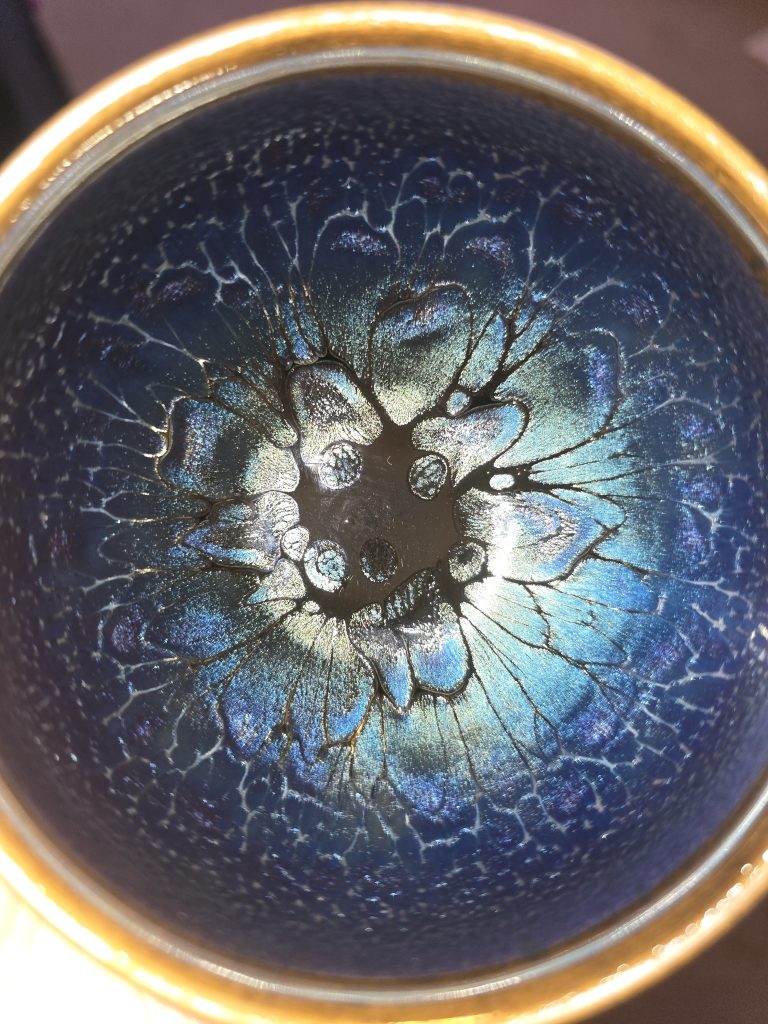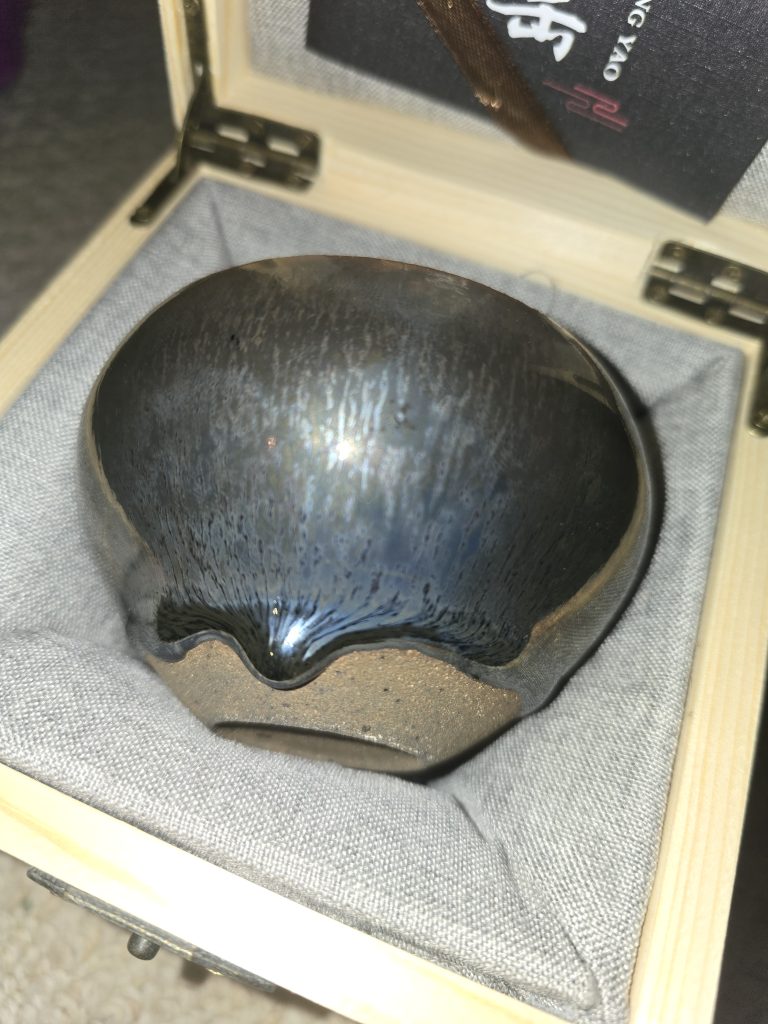The History of JianZhan
A Legacy of Fire and Clay
JianZhan (建盏) teacups are among the most revered ceramics in Chinese history. Originating during the Song Dynasty (960–1279 CE), these dark-glazed stoneware cups were once the favorites of emperors, scholars, and Buddhist monks. Their distinctive beauty—marked by oil-spot, hare’s fur, and partridge feather patterns—was born from centuries of craft refined through high-temperature wood firing.
Origins in Fujian
JianZhan ware was first produced in Jianyang, located in northern Fujian Province. The region’s rich iron-laden clay and natural resources provided ideal conditions for ceramic innovation. Local kilns, especially those of the Jianyao kiln, became known for their unique dark glazes that revealed mesmerizing patterns when fired at around 1300°C.
The Tea Culture Connection
During the Song Dynasty, tea culture flourished with the popularization of whisked powdered tea (点茶 / diancha)—a precursor to Japanese matcha practices. JianZhan’s dark glaze was the perfect contrast to the bright froth of green tea, making it the vessel of choice in tea competitions and elite gatherings. Even the Emperor Huizong, an avid tea connoisseur, praised JianZhan in his treatise Daguan Chalun.
Decline and Revival
As dynastic tastes shifted during the Yuan and Ming Dynasties, lighter porcelain from Jingdezhen rose to prominence, and JianZhan gradually fell out of favor. Many kilns ceased production, and the technique was nearly lost for centuries.
However, in recent decades, a revival movement—fueled by both historical appreciation and the rise of artisan teaware—has brought JianZhan back into the spotlight. Contemporary potters in Fujian have resurrected ancient techniques, often blending them with modern innovations to reimagine JianZhan for today’s tea drinkers.
Modern-Day Significance
Today, JianZhan cups are not only beautiful to behold but also prized for their functional qualities. The iron-rich clay is said to soften the taste of tea, while the glaze patterns continue to captivate collectors and tea lovers alike. No two cups are identical—each is a one-of-a-kind expression of fire, earth, and tradition.
Why JianZhan Matters
To hold a JianZhan is to hold a piece of living history. Whether you’re savoring a ceremonial matcha or simply enjoying a quiet moment with your favorite brew, these cups connect you with a timeless tea tradition that continues to evolve.


